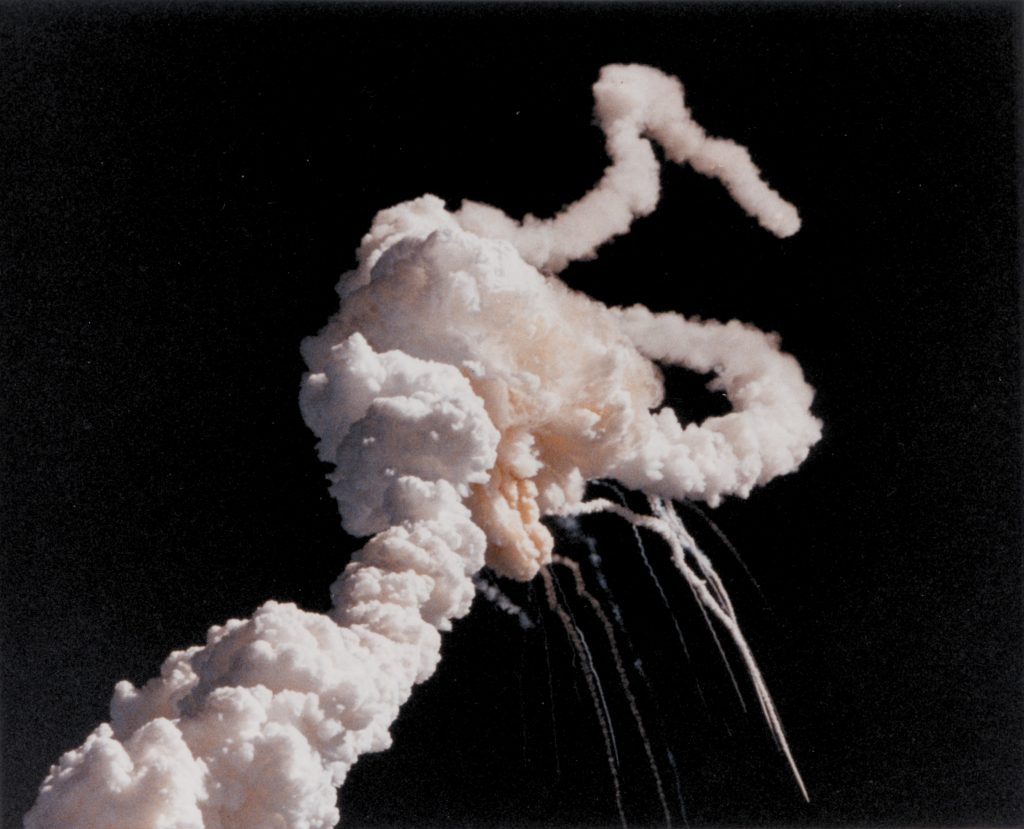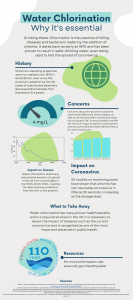On the evening of January 27th, 1986, an engineer at a little-known company told his wife, “It’s going to blow up.” That man was Bob Ebeling, an engineer for Morton Thiokol, which had been contracted to manufacture and maintain the solid rocket booster (SRB) used by NASA’s space shuttle program. On that night, he and his coworkers tirelessly pleaded with NASA officials to delay the launch of the space shuttle Challenger until temperatures were more favorable. Sadly, NASA officials did not heed these warnings, and all seven crew members of STS 51-L lost their lives.1
This story starts before that tragic day with the creation of the space shuttle program. As you can imagine, any vehicle designed for space undergoes rigorous testing and analysis before being put into use. During these early tests, engineers at the Marshall Space Flight Center saw a potentially catastrophic flaw in the two o-ring design that the SRB used in its joints and reported their concerns to NASA in 1971. NASA disregarded these concerns and did not pass this report onto Morton Thiokol for further evaluation. NASA approved the shuttle program and put the shuttles into production. By the second shuttle mission, there was serious evidence that supported the original concerns for the SRB o-ring failure. The evidence continued to stack up with each subsequent mission. In 1985 Morton Thiokol decided to redesign the joint to include an additional three inches of steel, which would grip the inner face of the joint and prevent it from rotating and potentially failing. Both NASA and Morton Thiokol agreed to continue with the launch schedule while they worked on this fix and accepted the potential for failure as an acceptable flight risk.2
Despite this risk, no shuttle had ever suffered a catastrophic failure during launch, orbit, re-entry, and no crew member had ever been injured or killed during a mission. The Challenger had already completed nine successful missions at this point and future missions were continuously being planned. This perfect record was a point of pride for NASA, and confidence continued to grow. This confidence caused NASA to be overly optimistic in their promise of how cost effective and efficient the shuttle program could be. These promises resulted in immense pressure from the government and tax payers to deliver on their promises with an overly ambitious launch schedule.3
The launch of STS 51-L had been planned as the first launch of 1986, and it would also put the first teacher in space. The addition of Christa McAuliffe, an elementary school teacher from New Hampshire, to the mission had garnered national and international attention. The launch was scheduled for January 22, 1986, but due to the delay of other missions, the launch of 51-L was pushed back several times — first to January 23rd, then to the 24th, 25th, 26th, and finally the 27th. On the morning of the 27th during regular countdown procedures, a micro switch indicated a failure of an exterior hatch-locking mechanism. By the time this issue was fixed, the winds had exceeded launch criteria. The launch was delayed yet again.4

Managers at Morton Thiokol had been watching the delays from their headquarters in Utah and were tracking the conditions with each delay. On the evening of the 27th, they saw the temperature would be below freezing at the launch site the next morning, which presented potential problems, raising concern. The shuttle and SRB had never been certified to operate in temperatures that low. Bob Ebeling had written an official memo for NASA titled “Help!” in 1985 where he described the extremely high potential for both o-rings to fail in temperatures below 40°F, but NASA had ignored it. That evening a manager at Morton Thiokol called Ebeling to ask if the shuttle could launch the following morning in the freezing temperatures. When Ebeling informed them of the extreme risk, they immediately started crunching the numbers and building their argument for the delay of the launch. Morton Thiokol and NASA held a teleconference. NASA opposed all arguments for a delay, and stated that if one o-ring failed there was a secondary mechanism that would stop a catastrophic failure from happening. Morton Thiokol engineers continued to explain that was an incorrect assumption that would surely lead to disaster. Sadly, NASA officials disagreed, and a second teleconference was scheduled. Except this time, the Morton Thiokol engineers were excluded, only management from NASA and Morton Thiokol were included. In this second call Morton Thiokol management disregarded the warnings of their own engineers and recommended that the launch proceed as scheduled.5

At 11:38AM on January 28th, 1986, STS 51-L launched from Cape Canaveral, Florida. On board were seven crew members: Francis Scobee, Michael Smith, Ronald McNair, Ellison Onizuka, Judith Resnik, Gregory Jarvis and Christa McAuliffe. At 11:39:13AM, just 73 seconds after launch, the space shuttle Challenger broke apart at an altitude of 14,000 meters. All crew members were killed when their cabin plummeted into the Atlantic Ocean three minutes after the break up.6
This disaster led to the immediate grounding of all shuttle missions. President Reagan convened a commission, called the Rogers Commission, to investigate the Challenger disaster. The results of the investigation showed the mechanical cause of the break up was a failure in both o-ring seals, which led to catastrophic structural failure. The report more importantly considered the contributing causes of the accident. It concluded that both NASA and Morton Thiokol failed to respond adequately to the potential danger of the SRB design, and instead of taking immediate action they accepted it as a flight risk. It also uncovered the large disconnect between management and engineers, which led to people who didn’t truly understand the science and math making a decision that was based on pride instead of fact.7

These tragic events unfolded more than three decades ago but are relevant today more than ever. The first private civilian space mission is rapidly approaching, and as it draws closer, we have to look closely at our past mistakes. If we don’t we are destined to repeat them. The millions who watched these events unfold have not forgotten how horrified they were, and they also remember how much the nation was shaken from this tragedy. Ebeling sums these feelings up best when describing how he feels looking back at what happened, “I could have done more. I should have done more.”8 We need to do our best to get everything right the first time, especially when failure equates to lives lost. We need to continue to focus on this as space travel becomes more prevalent in our society, and like Morton Thiokol and NASA in the ’80s, we can’t value our pride more than human lives.
- Howard Berkes, “30 Years After Explosion, Challenger Engineer Still Blames Himself,” NPR, January 28, 2016, https://www.npr.org. ↵
- Wikipedia, 2018, s.v. “Space Shuttle Challenger Disaster,” https://en.wikipedia.org/wiki/Space_Shuttle_Challenger_disaster. ↵
- Howard Berkes, “30 Years After Explosion, Challenger Engineer Still Blames Himself,” NPR, January 28, 2016, https://www.npr.org. ↵
- Diane Vaughn, The Challenger Launch Decision: Risky Technology, Culture and Deviance at NASA, Enlarged Edition (Chicago, IL: University of Chicago Press, 2016), 1-3. ↵
- Wikipedia, 2018, s.v. “Space Shuttle Challenger Disaster,” https://en.wikipedia.org/wiki/Space_Shuttle_Challenger_disaster. ↵
- Funk & Wagnalls New World Encyclopedia, 2017, s.v. “Challenger Disaster.” ↵
- Wikipedia, 2018, s.v. “Space Shuttle Challenger Disaster,” https://en.wikipedia.org/wiki/Space_Shuttle_Challenger_disaster. ↵
- Howard Berkes, “30 Years After Explosion, Challenger Engineer Still Blames Himself,” NPR, January 28, 2016, https://www.npr.org. ↵



96 comments
Mia Stahl
I have always been interested in space travel and in the work NASA does but in all my years of keeping up with NASA I had not heard about how neglectful they had been regarding The Challenger and the space crew that accompanied it. It is unacceptable in my eyes to put the lives of real human beings at risk in order to further your agenda simply in order to keep up with those around you. The inescapable pressure of being the best seems to have cost NASA the lives of several of their astronauts and yet still they were only interested in their agenda.
Sarah Nguyen
Congratulations on being nominated for an award! This article reminded me of The Mariner 1 – which was also a failed spacecraft mission, fortunately unmanned. The Mariner crashed and burned due to a minor mistake in the code that went into the craft, although there are multiple theories on what actually caused the craft to crash, the believe it was a missing hyphen. A small minor detail that could’ve been prevented caused NASA to lose the equivalent of $600 million dollars today, insane! This is also reminiscent of the BP oil spill. Executives at BP cared more about saving money and face than caring about the possible dangers of the equipment, their employees, and the environment, resulting in a catastrophic oil spill. This goes to show that history repeats itself, and is very much preventable if they choose to pick the wellbeing of others compared to their bank account. Great article, thanks for sharing!
Bruno Montes de Oca
In my opinion, I don’t know if this was an accident or negligence. The case for the accident could be made if the management of NASA and Thiokol honestly believed there were flight risks. However, it could be negligence if there was something to gain from not postponing the launch. Whether that be a monetary bonus, or some other incentive. If there was something, then it points to negligence, but either way I don’t understand why NASA couldn’t just hold off another day and be safe rather than sorry. This is a huge tragedy and it should not be overlooked when looking at space history.
Brianna Ford
This was such a tragic event and the fact that NASA could have easily delayed the launch due to engineers saying it was not fit for launch and potentially avoided the wreak is so unfortunate. This event sadly took the lives of seven brave intellectual individuals who were ready to change the world. This was a very good written article, congratulations on the nomination it is well deserved on such a great article.
William Ward
Such an awful and avoidable tragedy that cost the lives of seven brave and presumably intelligent crewmembers. It is difficult to believe that a program as known and respected as NASA would go forward with such a dangerous and unnecessarily risky launch despite the warnings Ebeling relayed. This is a great article on a terribly tragic topic, and I hope those brave astronauts did not die in vain.
Eric Ortega Rodriguez
This is a very sad article since it revolves around a tragedy. I find it crazy how NASA officials would not listen to their precautions. It bothers me to think that the lives could have been saved if precautions were listened to. However, this has to be looked at as a learning experience for future space exploration. Space is extremely dangerous and from now on we need to make things as safe as possible. Overall, great use of images and very well written. Great work.
Cooper Dubrule
I had heard of the challenger disaster prior to reading this however I had not known that an engineer knew it was going to explode before they even attempted to launch. The fact that he warned NASA officials shows negligence on their part and it costed them greatly. I really like the images used, they vary in what they show and are relevant to what Tyler is saying in the article.
Daniel Linstead
This is a sad story. Reading it I couldn’t help thinking that Bob Ebeling and his coworkers were ignored by NASA and in result it costed them their lives.It is just hard to think about to be honest. On a positive note though, congratulations on your nomination for best use of images it is nice to see that you got recognition for your hard work.
Honoka Sasahara
It is tragedy itself that as much as seven people’s lives were lost because of ignoring of possibility of risk. I think that NASA is doing great jobs in our societies and getting on with a government is not easy. However, I hope that they take care most of the lives of heroes who dedicate theirselves to achievements and developments of human society.
Matthew Wyatt
What a horrible and avoidable tragedy. This story stands as yet another cautionary tale regarding over-confidence bordering on hubris. The images go a long way towards telling a more effective story, and it’s clear to see why it was nominated in that category. The narrative could be made more powerful by avoiding unnecessary repetition of certain words and phrases which make the flow of the piece go a little flat.